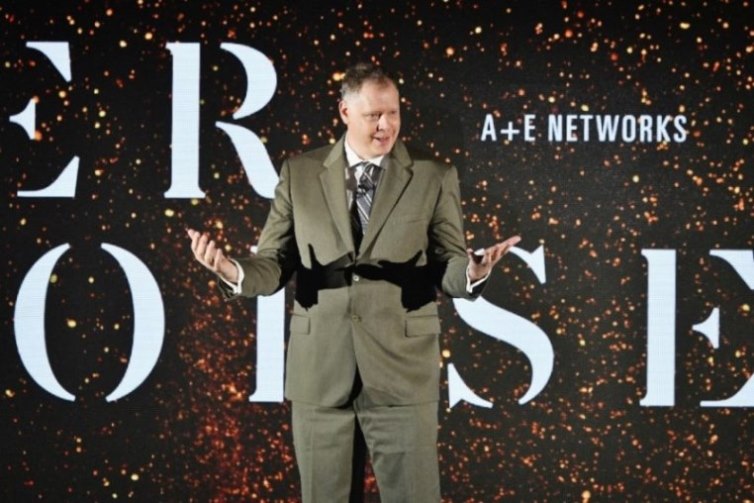A+E Pitch to Upfront Buyers: Count Older Viewers Too
A+E Networks sets virtual presentation for March 3

A+E Networks wants to make demos history in this upfront.
Noting the continued erosion of younger viewers from traditional TV, the programmer said it intends to transact on total audience as its currency for the 2021-22 broadcast year.

Like last year, when the coronavirus forced programmers to cancel their in-person upfront presentations. A+E said it will conduct its upfront presentation for media buyers and clients virtually on March 3. The presentation will highlight programming on A&E Network, History and Lifetime.
Also Read: A+E Networks Leans Into Linear
Most ad deals are now based on demographic groups, mainly people, men or women 18 to 49 years old or 25 to 54 years old. In that arrangement advertisers pay for--and are guaranteed to reach--viewers under 54.
Those advertisers’ commercials are also seen by a huge number of viewers 55 and older--the biggest group of traditional TV viewers--but the advertisers get those eyeballs for free.
What A+E wants is to charge advertisers for all viewers 18 years and older as their primary currency. The programmer will also provide clients with secondary assurances based on demographic or more specific behavioral targets that more closely match potential buyers for their products or services..
The smarter way to stay on top of broadcasting and cable industry. Sign up below
Peter Olsen, president for advertising at A+E Networks, noted that people using television PUTs in the 18 to 54 age bracket have been eroding 9% per year for the last four years. “If you look at 18 plus, there’s only 3% erosion. You do the math and you realize that a great number of the audience remaining is in that 55-plus range.”
That 55-plus audience is taken for granted, “Olsen said. “This is a call for marketers to look at age in a similar inclusive way they look at age and gender.”
The way ad buyers focus on young viewers versus who actually buys an advertiser process has long been an issue among the TV networks. Legendary CBS research chief David Poltrack presented many studies showing that the network reached many people that bought its clients products and that many of them were 55 and older.
Also Read: CBS Says It Leads Nets in Consumers
“One of every three adults is 55 plus and it’s the fastest-growing demographic group,” said David Ernst, VP advanced television & digital analytics at A+E. “The have the most money by for of any demographic group and when you put together the size of this audience, the disposable income they have and the fact that they do respond to advertising, we think it’s really an untapped marketplace.”
Olsen acknowledged that some advertisers won’t want to give up reaching older consumers for free, but after a year in which advertisers demanded--and got--additional flexibility from their media partners as they worked their way through the pandemic, he was hopeful buyers and clients would be flexible as well regarding a shift to basing deals on 18 plus.
More importantly, advertisers who insist on buying linear TV risk getting squeezed out of a medium that works by other clients willing to pay more for commercials because they acknowledge the real number of people they reach and how much they buy.
“We’ve seen this continued accelerated influx of dollars from the direct to consumer marketers, and they view all of this differently,” Olsen noted.
"The DTC marketers don’t care about traditional guarantees. They’re just going to build businesses and their seeing television as an opportunity and they’re starting to steal share from some legacy clients,” Olsen said. “What we’re proposing is the legacy folks need to learn some lessons here.”
The good news for buyers shifting to basing buys on 18 plus, is that ad prices would go up more slowly. Olsen estimates that based on audience erosion in the demo and a likely pickup in the economy once more people get vaccinated, prices could be up 15% to 20% on a CPM basis--a number that wouldn’t be acceptable to most clients.
During the last upfront, A+E clients were provided pricing as if they had bought on 18 plus, and on the basis of 18 plus, the price increase would be a third as large.
“That would be a sustainable framework,” Olsen said. “What we’re saying is traditional television should be seen as a total audience play with frankly a skew towards the older audience.”
To reach younger viewers Olsen said advertisers can buy A+E digital platforms or shift to ad-supported streaming services.
Advertisers are also slowly but surely shifting toward buying data driven targeted commercials and addressable advertising, which also do not hinge on broad age and sex demographics, but instead focus on people likely to buy a car in the next three months, or high-income people likely to need a broker.
“Let’s try to create a framework that works versus keeping our heads in the sand and pretend we can keep negotiation all 18-49 linear only and think that we’re not going to have problems,” Olsen said.
Jon has been business editor of Broadcasting+Cable since 2010. He focuses on revenue-generating activities, including advertising and distribution, as well as executive intrigue and merger and acquisition activity. Just about any story is fair game, if a dollar sign can make its way into the article. Before B+C, Jon covered the industry for TVWeek, Cable World, Electronic Media, Advertising Age and The New York Post. A native New Yorker, Jon is hiding in plain sight in the suburbs of Chicago.

